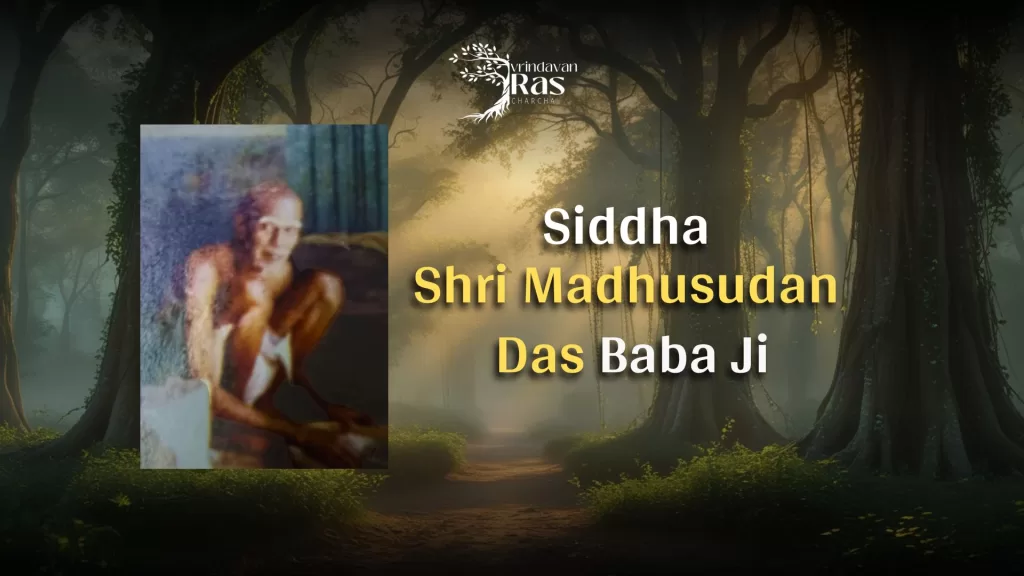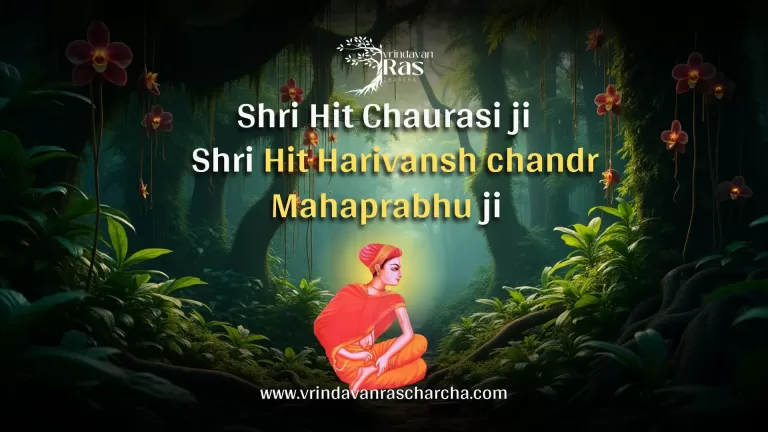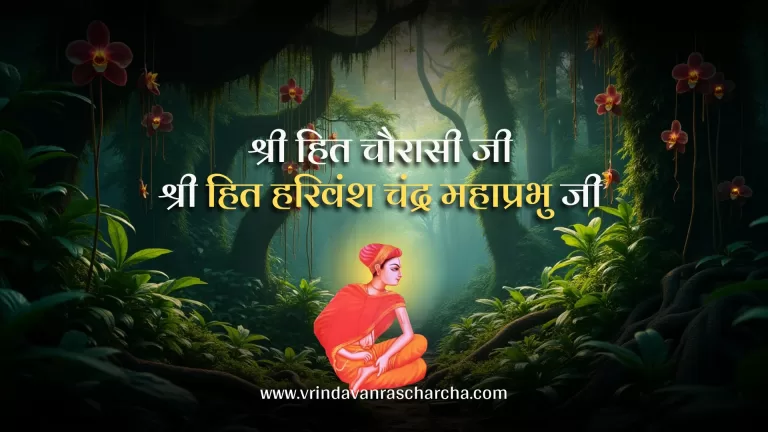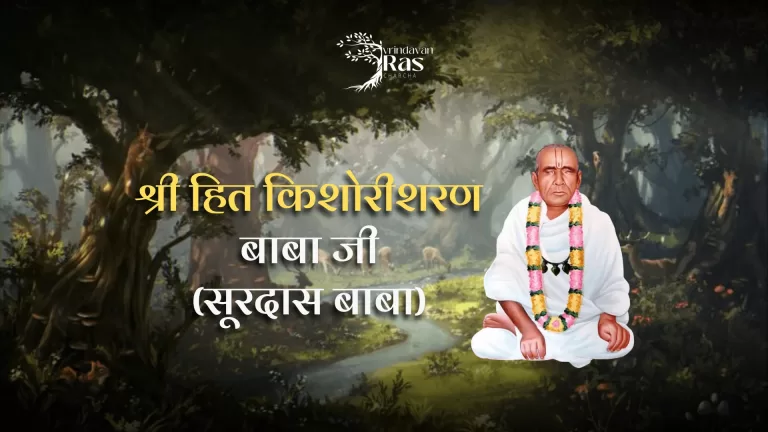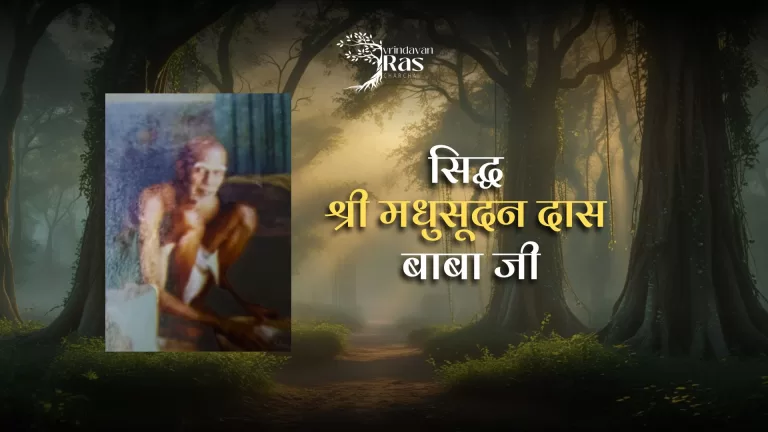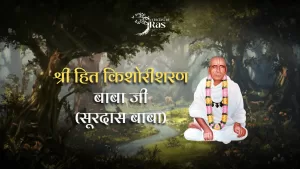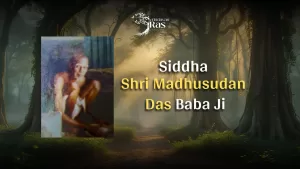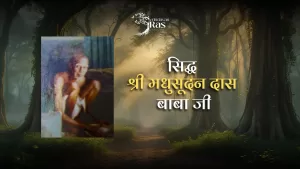Baba was born in the sacred land of Bengal. Whenever saints visited the village, he would eagerly go to attend their discourses and have their darshan.
One day, a group of rasik saints from Braj came to his village. They described the divine beauty and enchanting pastimes of Shyamsundar in such a sweet and captivating way that his heart was forever drawn to that divine form. The saints said, “Once Shyamsundar is attained, there remains nothing else worth desiring in this world.”
Baba returned home, but now his heart was consumed with the yearning for a vision of Shyamsundar. He lost interest in all worldly matters. His family grew increasingly concerned. Fearing he might renounce the world and run away, they hastily arranged his marriage—against his will. But on the very night of his wedding, he quietly left his home and set out toward Shri Dham Vrindavan.
Upon arriving in Vrindavan, he would sit alone on the banks of the Yamuna, weeping in remembrance of the Flute Player. Sometimes he would beg for madhukari (alms), and at other times, he would simply subsist on Yamuna water. He had heard from saints that without a spiritual master (guru), one cannot attain the Lord.
One day, while sitting under a tree near Keshi Ghat, contemplating the need for a guru, a sadhu approached for a bath in the Yamuna. He came to Baba and gave him mantra-diksha (initiation). As soon as Baba heard the mantra, he fell unconscious, overwhelmed by divine emotion.
When he regained awareness, the sadhu had disappeared. Baba neither knew his name nor where he had come from. He simply began chanting that mantra with full sincerity every day.
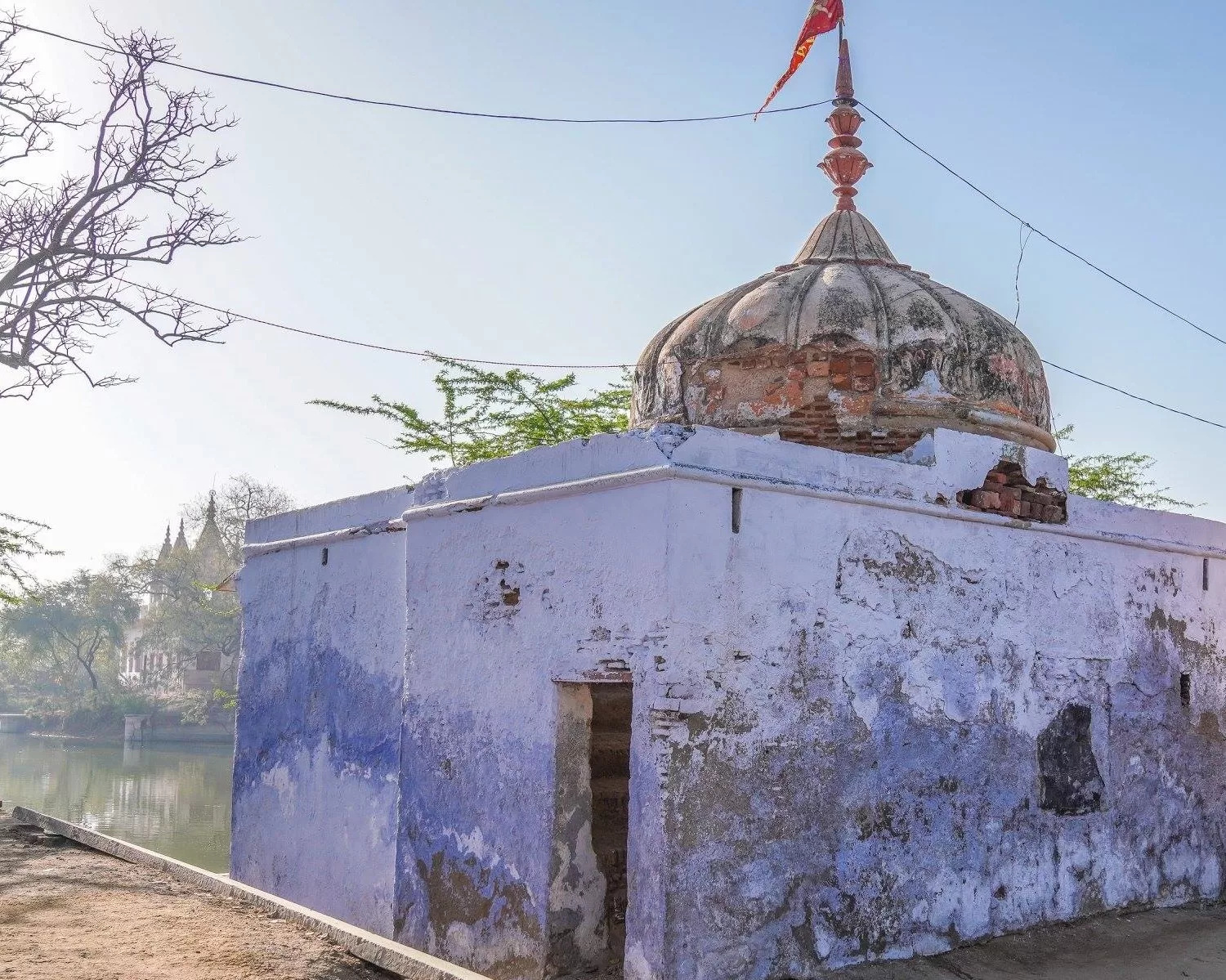
Hearing this, Baba Ji said,
“Our path is one of sambandhanuga bhajan — devotion based on a specific loving relationship with the Lord, as revealed through the guru-parampara. But you do not even know your guru’s lineage. Without this, you cannot enter the realm of raganuga bhajan.
Also, since you’ve already received diksha with mantra-meaning from a divine source, another initiation cannot be given.”
Hearing this, Baba became deeply disheartened and began to weep. Krishnadas Baba Ji then said,
“Go to Kamyavan and meet Siddha Shri Jayakrishnadas Baba Ji. Tell him everything.”
Baba journeyed to Kamyavan and shared his entire story. Jayakrishnadas Baba Ji said,
“Chant the Holy Name in solitude. Whatever Radharani wills, will come to pass. Just as She fulfilled your desire for diksha through the direct grace of Gurudev, She will also fulfill your longing for raganuga bhajan.”
Consoled by these words, Baba returned to Govardhan. There he thought to himself — “If I am not qualified for raganuga bhakti, then what is the use of this life?”
In this spirit of complete surrender, he tied a Govardhan shila to his neck with a rope and jumped into Shri Radhakund. He remained submerged for a long time in an unconscious state.
When he regained consciousness, he found the rope untied and himself lying safely on the bank of Radhakund. In his hand was a red-colored leaf with some words written on it. Taking this as a sign of mercy from Shri Radha, Baba went again to Jayakrishnadas Baba Ji and showed him the leaf.
Baba Ji said,
“This is indeed a sign of Her grace. What you have received is still in a hidden form. Go back to Radhakund and call out to Her. She will certainly respond.”
With renewed faith, Baba returned to Radhakund and, filled with intense pain and longing, began to cry out for Shri Kishori Ji. Moved by his deep surrender and helplessness, the supremely compassionate Radharani finally manifested Herself and gave him Her darshan.
She said,
“Go to Suryakund and do your bhajan there. You shall receive the raganuga seva you yearn for. The mantra you have received — do not give it to anyone. Keep it secret for life.”
Then She disappeared.
Following Her divine command, Baba went to Suryakund and immersed himself in bhajan.
One night, Shri Priyaji appeared in his dream and instructed him:
“At the ghat where you bathe, there lies a submerged stone near your neck level. My sakhis and I used to place our ornaments upon that stone while bathing. The imprints of those ornaments are still on it. Retrieve that shila and worship it.”
Baba followed the instruction and recovered the shila. He began worshipping it regularly. Even today, devotees visit and take darshan of that sacred stone. From that day onward, people began calling him “Siddha Baba.”
Once during the Kartika month, Baba expressed his desire for a recitation of the Shrimad Bhagavatam. The Brijwasis happily arranged everything. The recitation of the Ras Panchadhyayi began.
A young boy of the Dom caste, who lived nearby, would come daily and listen with great attention. Some Brijwasis gossiped about his presence. On the final day, the boy came and sat on Baba’s lap and innocently asked:
“Baba, after the Ras Lila, where did Shri Krishna go to rest — in Sevakunj or in Sanketvan?”
Before Baba could answer, a sound like a divine explosion was heard — as if something had burst open. Baba’s life-force exited through his brahmarandhra (crown of the head), signifying complete liberation.
At that very spot, his samadhi was established — which remains there near Suryakund to this day.
On the Ashtami tithi of the bright fortnight of Margashirsha, Baba entered into eternal Nikunja Seva in his manjari form.

